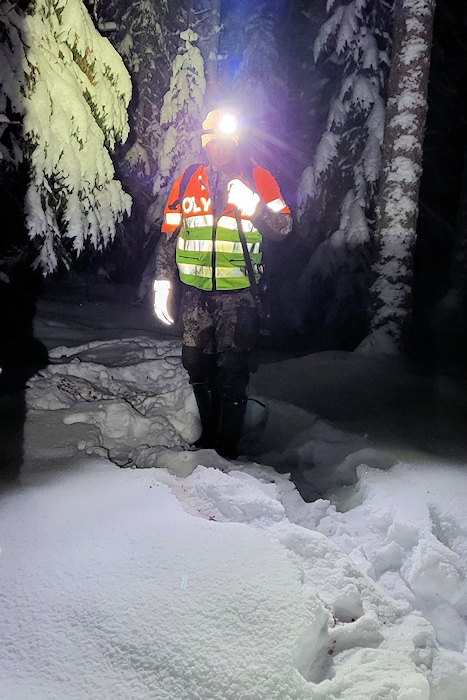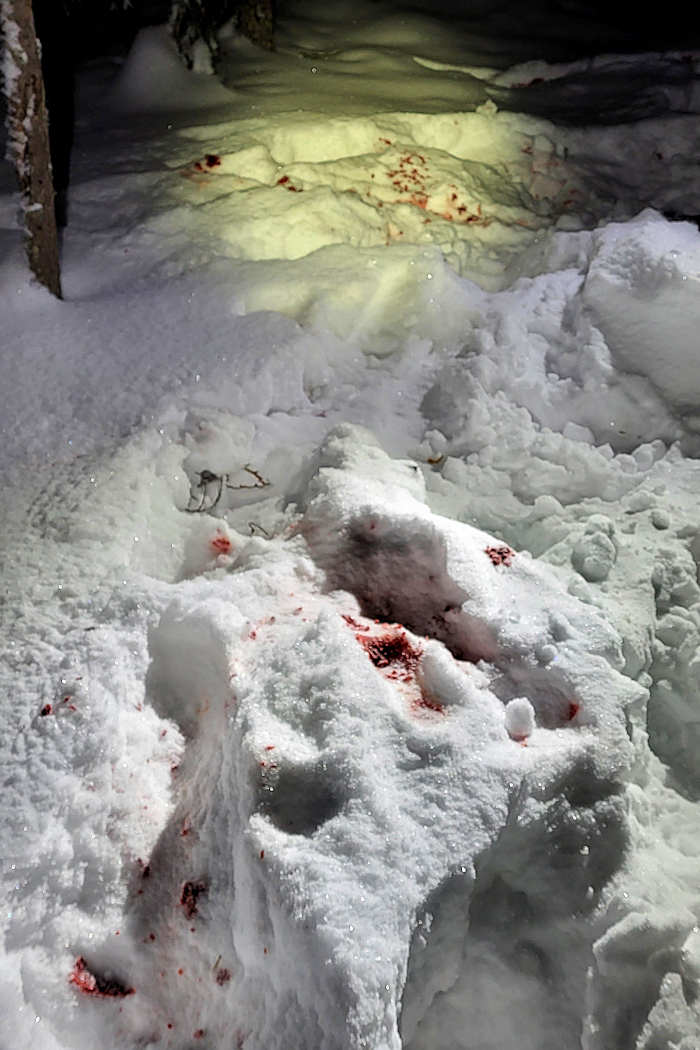| |
back to start page |
|
| |
animal tracking in
darkness |
|
| |
 |
|
| |
Tracking an injured animal can be both difficult
and risky. A large part of the initial work is done on or close to the
road, where traffic often is dense and stressful. It is therefore most
important to mark the working area with warning tents and flashlights
and that protective reflecting clothing is used. Marking the area is
especially important during the dark period of the year with bare
grounds when the darkness appears very dense. Under the winter season
deep snow gives a lot of reflexes, and the warning lights can clearly be seen from far distances. |
|
| |
 |
|
| |
Working in darkness when the ground is bare, it
is essential to really be aware and really trust the dog and read its
body language. It can be hard to register any trace signs and to assess
if the animal is wounded and if so how and how much. One help in the
darkness is if reflexes from the eyes of the tracked animal are seen, as
this might give info on how the animal behaves and from this assess its
condition.
During the winter, some parts of the work can be easier as
tracks often are easy to follow in the snow. Signs of injuries like
stains of blood or anomalies in the track pattern depending on leg
injuries gives good help when trying to estimate the condition of the
animal.
But on the contrary, deep snow might also have a negative
effect as it might limit the possibility of overtaking the animal and
really deep snow really affects the possibility of using dogs. |
|
| |
 |
|
| |
In this case the accident occurred at night in
total darkness. One moose was hit by a car but two animals had been
observed on the
road. Tracks clearly showed signs of a cow and a calf and that both
animals had left the road together. No signs of animal injuries could be
seen at the accident site or in the tracks a short distance from the
road. After about 50 meters small sign of blood began appearing in the
tracks of one of the animals, and when following the tracks further the
bloodstains were getting larger and irregularities in the tracks began
to appear.
Along the tracks, there were several signs of the smaller
of the animals that had been laying down and also had difficulties when
trying to rise. With all registered signs it was quite easy to determine
that the calf was severely injured with a broken right front leg. This
kind of information is invaluable when making up the tactics for the
rest of the work. When the animal finally was found and put to sleep, it
felt good to see that the interpretation of all signs was correct
and the suffering was ended.
In a tracking situation like this, the
snow gave a lot of help in spite of the darkness and the really deep
snow, as all signs were easy to read.
|
|
| |
back to top of page |
|


